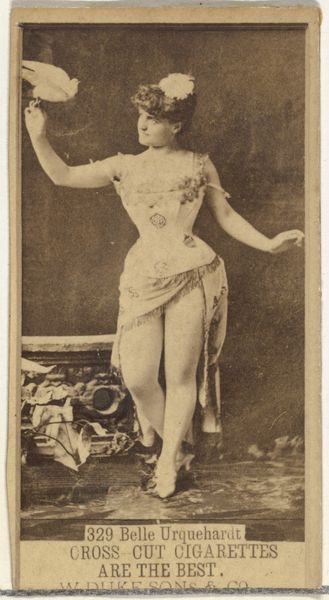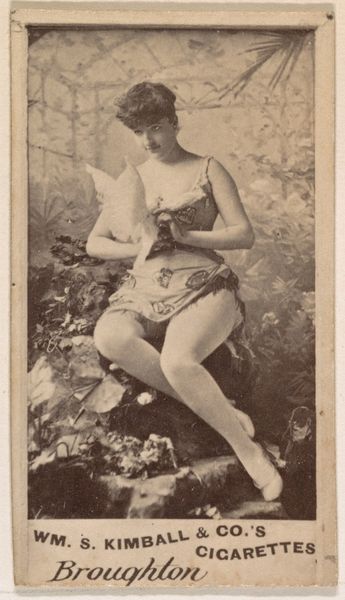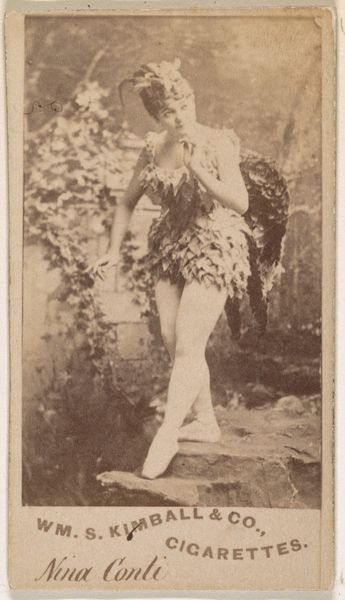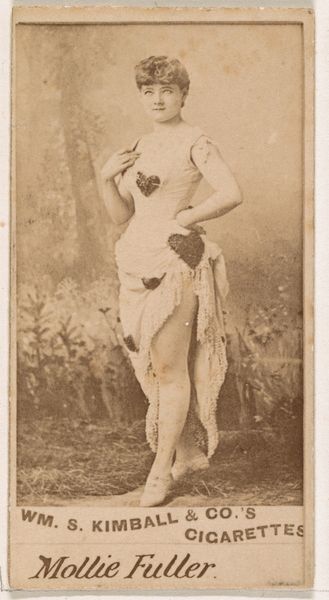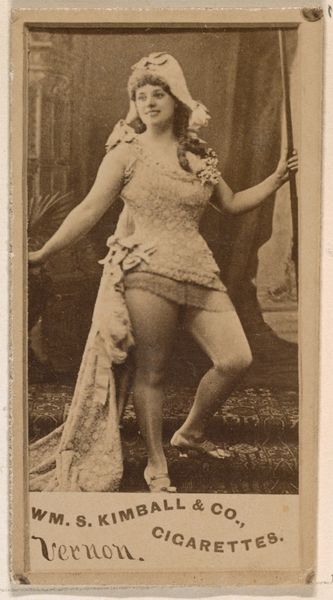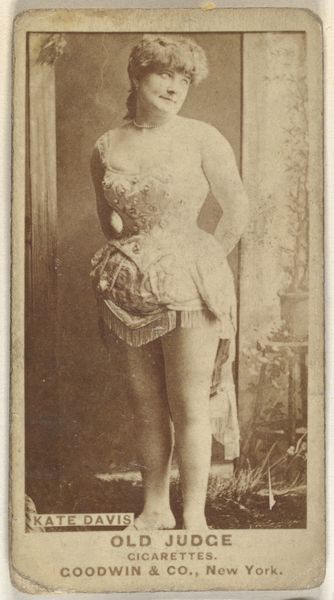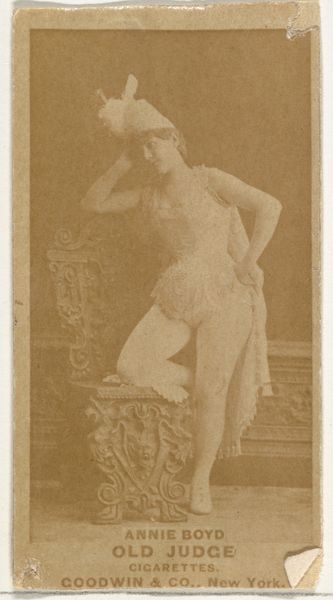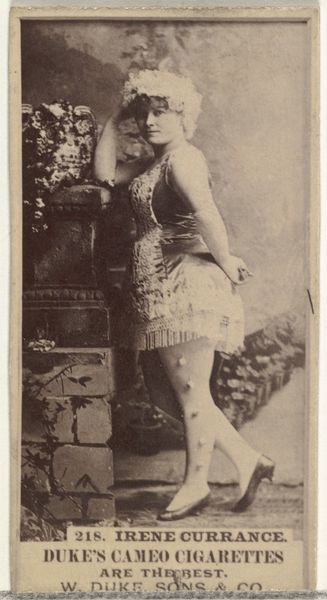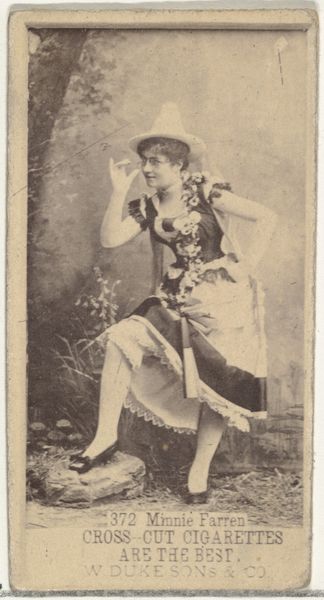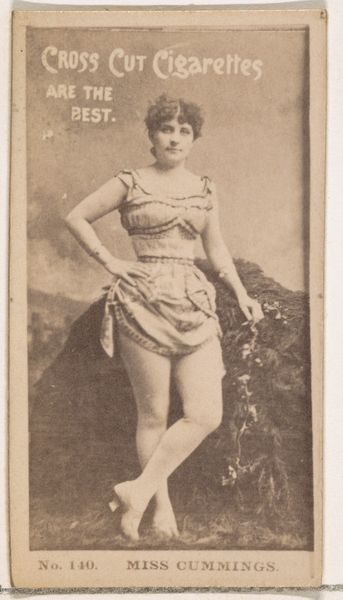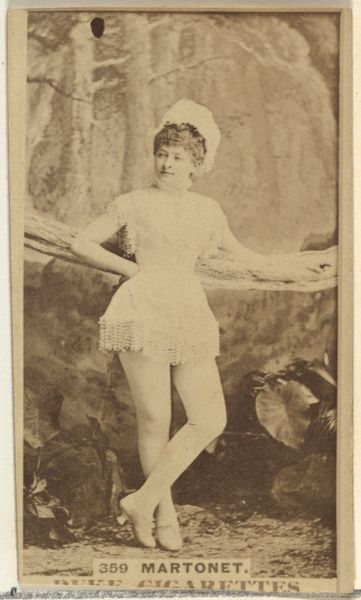
Card Number 198, Dollie Haskin, from the Actors and Actresses series (N145-5) issued by Duke Sons & Co. to promote Cameo Cigarettes 1880s
0:00
0:00
drawing, print, photography
#
portrait
#
drawing
# print
#
photography
Dimensions: Sheet: 2 11/16 × 1 3/8 in. (6.8 × 3.5 cm)
Copyright: Public Domain
Curator: The Duke Sons & Co. issued this photographic print, Card Number 198, Dollie Haskin, in the 1880s as part of their Actors and Actresses series to promote Cameo Cigarettes. It now resides in the Metropolitan Museum of Art. What is your immediate impression of the work? Editor: Well, taken on its own, it appears rather theatrical, almost allegorical. The monochrome tonality gives it an antique feel, while the contrast between the stylized pose and the natural background feels intentionally…staged. Curator: Exactly! Note the compositional arrangement—Dollie Haskin’s posture creates a diagonal line across the frame, engaging the eye and accentuating her form. The delicate play of light and shadow emphasizes her physicality and the theatrical backdrop. We see that line repeated in her carefully arranged costume and the frond she's holding, don't we? Editor: While that's a persuasive formal reading, the image has deeply problematic undercurrents for today's viewer. The "Actor and Actresses" series served the dual purpose of promoting cigarettes and commodifying female performers. This card, by associating Dollie Haskin with the product, turns her into a purchasable object. What does it tell us about the late 19th century that women's bodies were seen as marketable commodities, used to entice consumers? And how did Haskin and other actresses benefit, or not, from the widespread circulation of their image in this way? Curator: True, although I think it could also be said that in the same manner as a canvas might represent wealth and success, she is, by virtue of appearing on the card, in some ways, gaining in influence and fame herself. The composition, tonal contrasts, and strategic staging all function together in a way that does seem to have had some level of collaborative intention and that is visually alluring. Editor: While it might bring recognition, one must acknowledge how the cards perpetuate asymmetrical power dynamics. Actresses, especially those not already at the top of their profession, may have had very little control over the reproduction and dissemination of their images. I think that acknowledging these elements and integrating these contextual complexities alongside, and perhaps in tension with, the analysis of form, allows for more informed interpretations. Curator: I can appreciate how your interpretation allows for richer conversations with diverse communities. Editor: Indeed, inviting discussions from both formalist and activist standpoints can provide opportunities for dynamic engagement with works of art such as this card.
Comments
No comments
Be the first to comment and join the conversation on the ultimate creative platform.
